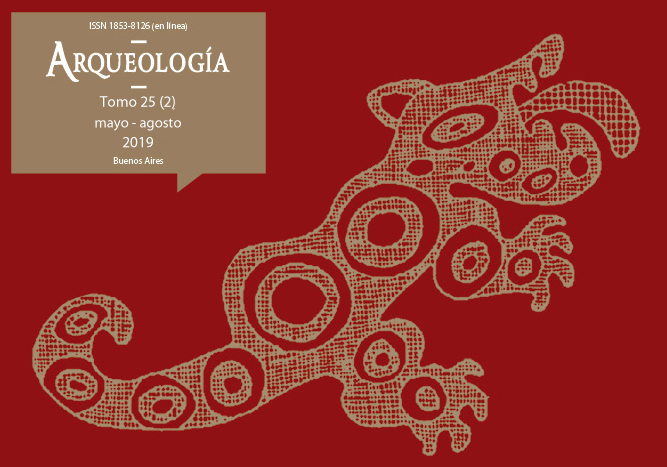Death seasonality determination from pinnipeds teeth: the Cueva del Negro site case (Argentine Patagonia)
Palabras clave:
Otaria flavescens, Seasonality, Patagonia, Hunter-gatherers, Coastal occupations
Resumen
In this article, we present the first results of the determination of season at death performed over eighteen South American sea lions (Otaria flavescens) teeth recovered at Cueva del Negro site (northern coast of the Santa Cruz Province, Patagonia, Argentina). Age and season of death was determined by growth-layer analysis on sea lion teeth. This analysis allowed us to suggest potential aboriginal hunting strategies regarding the capture of these pinnipeds. Our results indicate that sea lions were hunted between summer and early fall, more precisely between January and April. This would reflect a marked seasonality in relation to sea lion availability, which could be explained in terms of mobility and subsistence strategies of the human groups that inhabited the area. In this sense, our results are discussed taking into consideration paleodietary data and the existing archaeological studies.Descargas
La descarga de datos todavía no está disponible.
Publicado
2019-06-01
Cómo citar
Ambrústolo, P., Zubimendi, M. A., & Crespo, E. (2019). Death seasonality determination from pinnipeds teeth: the Cueva del Negro site case (Argentine Patagonia). Arqueología, 25(2), 247-262. https://doi.org/10.34096/arqueologia.t25.n2.6886
Sección
Notas
Derechos de autor 2019 Pablo Ambrústolo, Miguel A. Zubimendi, Enrique Crespo

Esta obra está bajo licencia internacional Creative Commons Reconocimiento-NoComercial-CompartirIgual 4.0.
Los autores/as que publiquen en esta revista aceptan las siguientes condiciones:
- Los autores/as conservan los derechos de autor y ceden a la revista el derecho de la primera publicación, con el trabajo registrado mediante Licencia Creative Commons 4.0 Internacional (CC-BY-NC-SA), que permite a terceros utilizar lo publicado siempre que mencionen la autoría del trabajo y a la primera publicación en esta revista.
- Los autores/as pueden realizar otros acuerdos contractuales independientes y adicionales para la distribución no exclusiva de la versión del artículo publicado en esta revista (p.e. incluirlo en un repositorio institucional o publicarlo en un libro) siempre que indiquen claramente que el trabajo se publicó por primera vez en esta revista.
- Se permite y recomienda a los autores/as a publicar su trabajo en Internet (p.e. en sus sitios web personales o en depósitos institucionales), tanto antes como después de su publicación en esta revista, siempre y cuando proporcionen información bibliográfica que acredite, si procede, su publicación en ella. De esta manera, pueden favorecerse intercambios productivos y a una mayor y más rápida difusión del trabajo publicado (vea The Effect of Open Access).



.png)

(1)13.png)






1.jpg)
1.png)
1.jpg)


13.png)
1.png)


(1)1.png)









